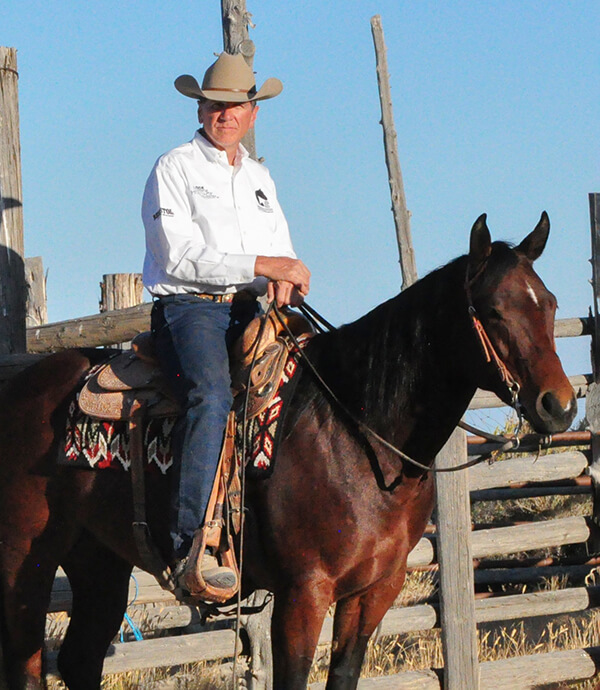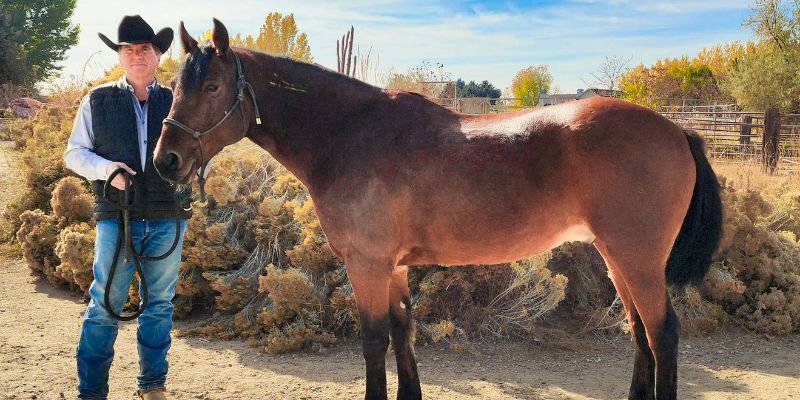My Journey with “Journey” the Mustang – Part 1
Mustangs are the wild horses of the American West. When most people think of wild horses, they think of stallions rearing and fighting with a band of mares and foals watching intently. Or maybe they think mustangs are a thing of the past—those great herds of horses that used to thunder across barren stretches of the Great Basin. Many folks might not realize that it’s common for horse people today to own mustangs—and it’s possible for you, too, to adopt a living legend who can become a member of your family. I’d like to share a little with you here about my journey with mustangs.
I’m a horse trainer, riding instructor, and horse show judge living in southwestern Idaho. I became interested in mustangs when we moved here about 13 years ago because there are wild horses in the hills nearby where we trail ride. I’ve trained numerous mustangs, beginning in 2011, and have competed in two Extreme Mustang Makeovers (finished in the top 10 in the first and won the second) and four Trainer Incentive Program (TIP) Challenges (finished in the top 10 in three of the four). I will talk about these competitions in a future article. I’ve also helped numerous clients prepare their own mustangs to compete or to simply get a good start in their lives with humans.
I am by no means the expert, nor am I the best mustang trainer out there. I’m always willing to learn from others more experienced than I am. However, I’m continually awed by the history of these horses, as well as their strength, fortitude, and willingness to accept us. I’ve had some amazing experiences working with mustangs; I hope I can inspire some of you to take the plunge into their world.
My most recent mustang adventure is with Journey, a wild four-year-old mustang I adopted in August of 2022. Some of you may have followed our adventures on Facebook during our 90 days preparing to compete in November 2022.
I take every mustang through essentially the same process; however, each horse is an individual and goes through their own journey (pun intended). Taking a wild animal—who has never been touched by a human and who wants nothing to do with us—to a point where they are rideable and able to compete in a mere 90 days takes time, sweat, and tears (I avoid the blood part for everyone’s sake). I try to help the mustang develop trust so we can make it possible for them to become good solid citizens (as we mustang folks like to say) and help them find a happy home. We will come back to my story with Journey in a later article.
So, what are mustangs? The word mustang in Spanish means “stray or wild, having no master”. In short, they are mutts. Initially they were descendants of the Iberian horses brought over on boats by early Spanish explorers to the New World. European settlers who came later brought other breeds of horses with them such as Thoroughbreds and draft horses. With hundreds of years and countless other horse breeds (escaped or intentionally turned loose) having interbred with the wild horses, the mustang population has evolved into an incredibly diverse, genetically complex group that has (hopefully) inherited the best of all the breeds. You can find mustangs that look like just about any kind of recognized breed.
Mustangs are found in the wild on federal lands in 10 western states (Arizona, California, Colorado, Idaho, Montana, Nevada, New Mexico, Oregon, Utah, and Wyoming) in areas designated as Herd Management Areas (HMAs). These HMAs are managed by the Bureau of Land Management (BLM), a division of the Department of Interior. In 1971 Congress passed the Wild Free-roaming Horse and Burro Protection Act which authorizes the BLM to manage these animals as part of its multiple-use mandate.
In 2022 there were around 80,000 horses and burros living on range across these 10 Western states. There were an additional 64,000 horses and burros in off-range corrals and pastures. The BLM estimates that wild horse and burro populations increase by 20% each year. Over the last several years the BLM has removed between 15,000 and 20,000 animals per year with the hope of having them adopted. Unfortunately, the annual adoption rate is only around 8,000 animals per year.
Visit the BLM Wild Horse and Burro Program website for more details about the program. The BLM, non-profit organizations, and hundreds of individuals are trying to make it easier for individuals like you to adopt and enjoy these great horses.
Next in this series, I will explain more about mustangs and my journey with Journey. I hope you will join me.
See this article in the May/June 2023 online edition:
May/June 2023 Issue

Matt Livengood is a seasoned reining and ranch riding competitor who holds judging certifications with NRHA, NRCHA, AQHA specialty, and ASHA. He teaches riders and horses about ranch riding and ranch versatility, as well as groundwork and starting Mustangs. Matt has competed in four Mustang Makeover events, reaching the finals in all four and winning both the 2017 Reno Extreme Mustang Makeover and the 2019 Mustang Madness freestyle in Cle Elum, WA.
Matt has judged numerous Extreme Mustang Makeovers, including virtual shows. He’s been an NRHA judge since 1999, judging shows across North America each year, including A and AA shows. In 2020, he judged at the AQHA World Show in both reining and ranch riding. Matt teaches and trains from his home, Sweet Pepper Ranch (sweetpepperranch.com) in Nampa, ID. Call 206-909-0511 or email mdlivngood@aol.com.

